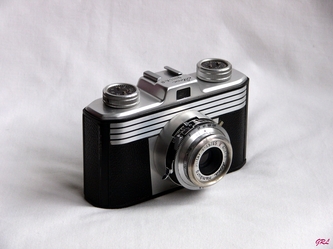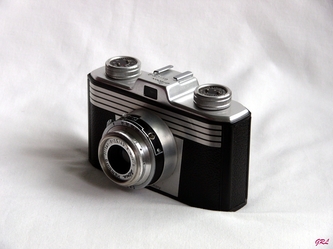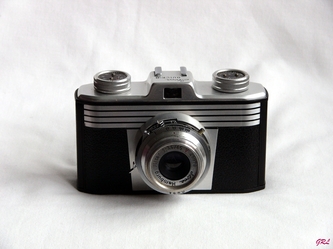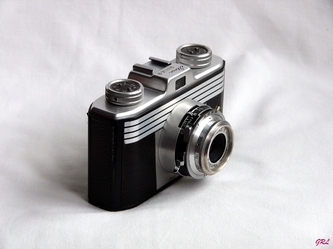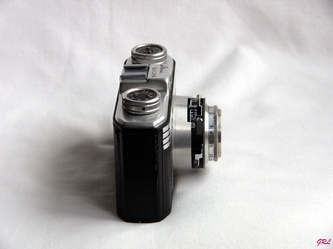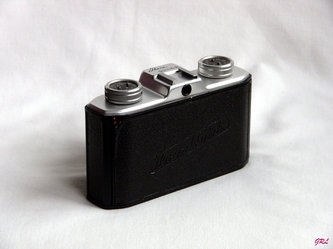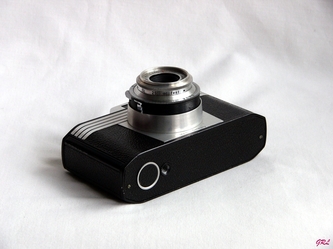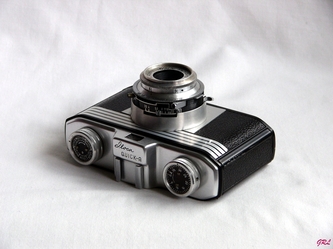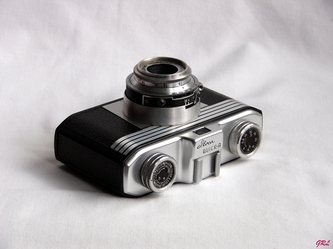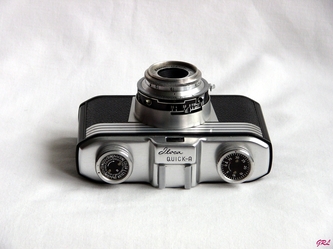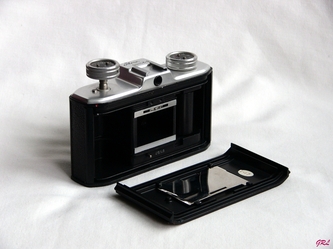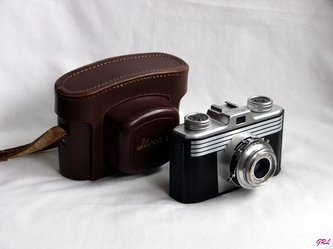Quick–A
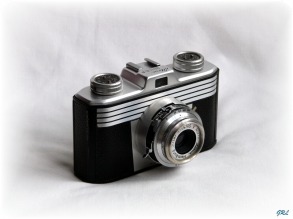
Iloca Quick–A
The Iloca Quick-A Series offered buyers the same basic compact camera as other Quick models in the range. However, the Quick-A was offered only with a Vero shutter and without the delayed action timer.
Functionally, the Iloca Quick-A continued the relatively simple and conventional in design of other Quick models, while retaining an attractive iconic appearance.
One tip for opening the back on these cameras: Pull the rewind knob upwards to its full extension. Then slowly turn clockwise until the springloaded mechanism releases the back. When replacing the back on earlier models, make sure the red dots on the camera back and the camera body are aligned.
Functionally, the Iloca Quick-A continued the relatively simple and conventional in design of other Quick models, while retaining an attractive iconic appearance.
One tip for opening the back on these cameras: Pull the rewind knob upwards to its full extension. Then slowly turn clockwise until the springloaded mechanism releases the back. When replacing the back on earlier models, make sure the red dots on the camera back and the camera body are aligned.
In Summary
A neat little 35mm camera with iconic 1950's appearance. A relatively simple camera with a robust and well-built feel. Reliability is no longer a concern with this model, which is capable of producing quite acceptable results given the right conditions.
Specifications: Iloca Quick–A
- Camera Type: 35 mm Compact Camera
- Format: 35mm film format producing image sizes 24mm x 36mm
- Shutter: Vero with speeds 'B', 1/25, 1/50, 1/100, 1/200 sec and X flash sync
- Lenses: Jlitar 1:3.5 / 45 mm, focus range 3 feet (0.9 metre) to ∞
- Aperture: F3.5 to F22
- Delayed Action: No
- Flash Capability: Flash Contact Socket
- Frame Counter: 0 to 36
- Rangefinder: No
- Lightmeter: No
- Other Features: Accessory Shoe, Tripod Mount, Leather Camera Case, Instruction Manual, Box
